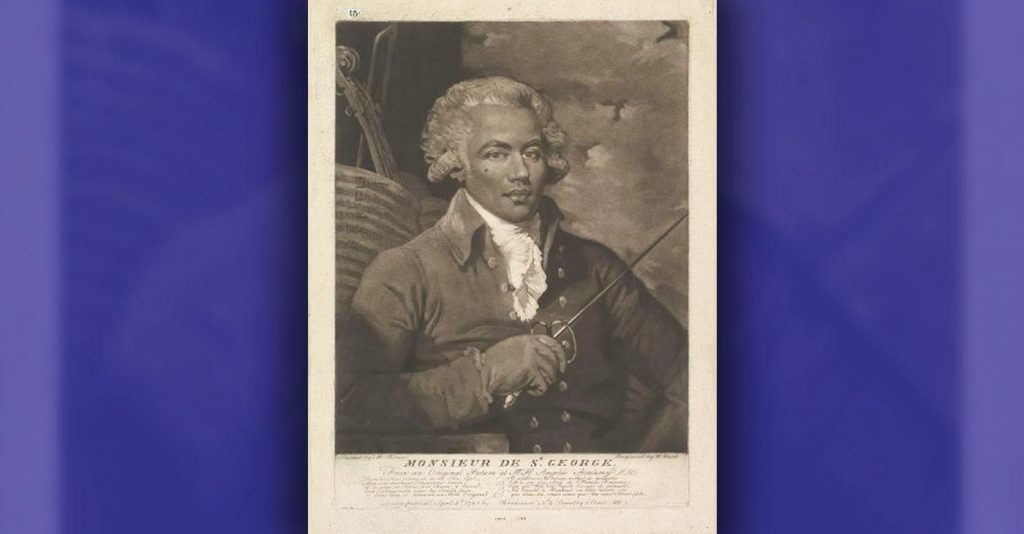By Tamara Shiloh
Black classical music artists have been performing publicly for more than 500 years. England’s King Henry VII and King Henry VIII were entertained by trumpeter John Blanke, a Black court musician. According to researcher Earl Ofari Hutchinson, “the list of Africans, African Americans, and Afro European composers, conductors, instrumental performers, and singers is and has always been, rich, varied, and deep.”
But “sadly,” Hutchinson adds, “the recognition of this history has almost always come in relation to the work of a major European or white American composer.”
Although the music played by Blanke and other Blacks of his time were fanfares, ballads, and song accompaniments, they still opened doors for those who would later perform concerto and symphonic forms. One would be Joseph Bologne de Saint-Georges (1745–1799).
Saint-Georges, a classical music conductor, composer, musician, and military officer was born in Guadeloupe, an island in the West Indies. His mother, la belle Nanon, was a slave of African descent and his father, George de Bologne Saint-Georges, a wealthy colony planter from France who owned the plantation that was their home.
The family relocated to France when Joseph was about 10. There he was able to deepen his studies in classical music under tutors Jean-Marie Leclair (violin) and Francois-Joseph Gossecin (composition).
Joseph eventually worked with French fencing master Nicolas Texier de La Boessiere, who trained him to use the sword. A natural athlete, fencing was a skill that would later make Joseph internationally famous. He was also skilled as a swimmer, runner, ice skater, pistol shooter, dancer, and horseman. With one arm tied behind his back, he swam the Seine River during winter.
Paris’ Pre-Revolutionary period, he stood amongst the most important musicians being a composer, violinist, and conductor. He became music director of the private theater of the Marquise de Montesson. The conductor of the Le Concert des Amateurs orchestra chose Saint-Georges as first violin. He made his public debut as a soloist during the 1772–73 concert season, performing his own violin concertos.
It has been argued that Saint-Georges’ work demonstrated the influence of Wolfgang Amadeus Mozart. He was thereby dubbed “The Black Mozart.” However, history shows that Mozart did not come to Paris until 1778 to study at the Paris School of Composition while Saint-Georges was a member.
Saint-Georges produced 14 violin concertos and nine symphonies between 1773 and 1785. He wrote two solo violin compositions, two symphonies, three sonatas for violin and harpsichord, and 18 string quartets divided into three collections of six quartets in each. In 1777, he began to compose several operas for the Comedie-Italienne.
“It is no exaggeration or overstatement to say that classical music does owe a debt to the Black experience in classical music,” says Hutchinson, “And the goal is to show music lovers and readers how that debt continues to be paid in concert halls everywhere.”











